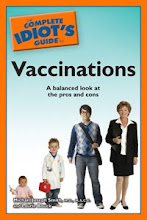Monday, March 31, 2008
Parents and Infant Swim Lessons
Despite these warnings, the popular and expensive La Petite Baleen program in the Bay Area, which often boasts a waitlist to get into classes, begins training children to be submerged in the water when they are just two months old. A new La Petite Baleen site is slated to open in June in the Presidio in San Francisco, and there are already 1,000 children enrolled, the article stated.
New parents are marketed to relentlessly. I still remember the box of formula that the postman shoved through my gate when I was pregnant with my first child (a product that I didn't want or need), and the mailings I received from Gerber and other companies who knew my due date, probably because my doctor's office had sold them the information. I heard a constant drumbeat of advice and buying information as a new parent, some of it from valid sources and some not.
I succumbed to the marketing as well, I think. Did I buy a Britax car seat and a Hanna Andersson jacket for my daughter because they were the best items on the market, or because being able to afford these things was a marker of my social class as a parent? I probably made these purchases for both reasons. Similarly, I think that the popularity of infant swim classes also has an element of status in it.
Are parents enrolling their young children in La Petite Baleen classes because they think that the AAP is wrong and swim lessons are good for infants and toddlers? Perhaps. Equally compelling, I think, is the social status that attending the school confers to the parents, which trumps anything the AAP says.
Tuesday, March 18, 2008
Art and Medicine
Since the
In the press room, I picked up a book the AAOS had put together describing the artwork, and I paged through it in my few quiet moments. By the end of the week, I had passed by the large bridge-shaped sculpture “Bone Rainbow” many times, although I did not initially notice that the bridge’s crossbars were made of bronze femurs. The artist, Ruth Cozen Snyder, had been injured in a car accident, and said in her artist’s statement that creating art had helped her cope with and recover from her injuries. Much of the patient art I saw and read about tried to make sense of, and rise above, the pain and disability that many patients faced.
My favorite piece was a painting by an orthopoaedic surgeon, called “Nothing About You Without You.” In the painting, a patient with a cast on his right foot and a sombrero hiding his face straddles a chair next to a vivid orange wall, the colors and clothing reminiscent of Central or
The Journal of the American Medical Association always features artwork on its cover, as an antidote perhaps to the technical articles inside. At the AAOS conference, it was refreshing to see such striking artwork as I ducked in and out of PowerPoint presentations featuring sutured knees, diseased hips, and MRSA infection statistics. It was a reminder that there are human beings on either side of the scalpel.



